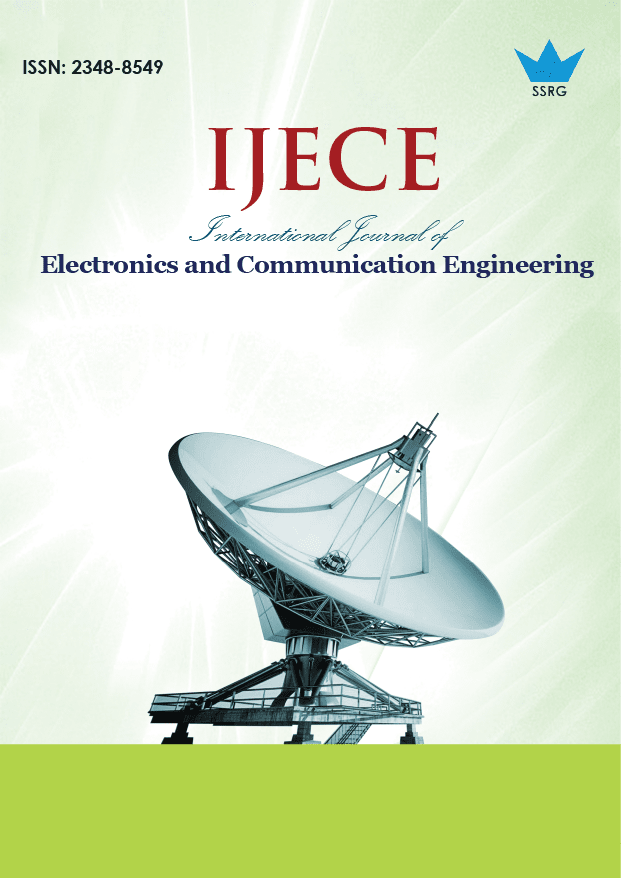An Enhanced Hybrid Approach for Real-Time Application-Layer DDoS Detection and Resilience in MANET Environments

| International Journal of Electronics and Communication Engineering |
| © 2025 by SSRG - IJECE Journal |
| Volume 12 Issue 7 |
| Year of Publication : 2025 |
| Authors : Kiran M. Salunke, Suresh Kurumbanshi |
How to Cite?
Kiran M. Salunke, Suresh Kurumbanshi, "An Enhanced Hybrid Approach for Real-Time Application-Layer DDoS Detection and Resilience in MANET Environments," SSRG International Journal of Electronics and Communication Engineering, vol. 12, no. 7, pp. 305-314, 2025. Crossref, https://doi.org/10.14445/23488549/IJECE-V12I7P124
Abstract:
Mobile Ad hoc Networks (MANETs) face growing security threats from application-layer distributed denial-of-service (DDoS) attacks, which create severe performance and reliability problems. This research develops a complete hybrid framework that combines Fuzzy Extrapolation System (FES) with Brownian Motion-enhanced Harris Hawks Optimization (BM-HHO) and an Extended Simplified Pulse-Coupled Neural Network (X-SPCNN) classifier. The BM-HHO algorithm identifies key features that reduce the input space to enhance model performance. The X-SPCNN system performs exact attack detection while the FES component assesses node trustworthiness and contextual factors to direct adaptive mitigation strategies. The proposed solution undergoes validation using a simulated MANET dataset, which includes malicious traffic patterns that simulate actual attack behaviour and real-world traffic of the Darknet. The framework demonstrates consistent detection accuracy above 99.2% with low false positives while operating effectively under typical MANET resource constraints. The combination of bio-inspired optimization techniques with neural classification and fuzzy reasoning enables a robust, scalable defense system that matches the dynamic decentralized characteristics of MANETs.
Keywords:
MANET security, DDoS attack detection, Fuzzy Extrapolation System, Harris Hawks Optimization, Feature selection, Pulse-Coupled Neural Network, Application-layer attacks, Real-time IDS.
References:
[1] N. Singh, A. Dumka, and R. Sharma, “A Novel Technique to Defend DDOS Attack in Manet,” Journal of Computer Engineering & Information Technology, vol. 7, no. 5, pp. 1-4, 2018.
[Google Scholar] [Publisher Link]
[2] Deepa, Kanwalvir Singh Dhindsa, and Bharat Bhushan, “Clustering-based Technique to Defend DDoS Attacks in Mobile Ad Hoc Networks,” Proceedings of ICETIT 2019: Emerging Trends in Information Technology, pp. 48-58, 2019.
[CrossRef] [Google Scholar] [Publisher Link]
[3] Deepaa, Kanwalvir Singh Dhindsab, and Karanbir Singh, “Entropy-Based DDoS Attack Detection in Cluster-Based Mobile Ad Hoc Networks,” Adhoc & Sensor Wireless Networks, vol. 49, no. 3-4, pp. 269-288, 2021.
[Google Scholar] [Publisher Link]
[4] Munshi Navid Anjum, Chandreyee Chowdhury, and Sarmistha Neogy, “Implementing a Mobile Agent-Based Secure Load Balancing Scheme for MANET,” 2019 International Conference on Opto-Electronics and Applied Optics (Optronix), Kolkata, India, pp. 1-6, 2019.
[CrossRef] [Google Scholar] [Publisher Link]
[5] M. Islabudeen, and M.K. Kavitha Devi, “A Smart Approach for Intrusion Detection and Prevention System in Mobile Ad Hoc Networks against Security Attacks,” Wireless Personal Communications, vol. 112, pp. 193-224, 2020.
[CrossRef] [Google Scholar] [Publisher Link]
[6] Raj Kumar Batchu, and Hari Seetha, “A Generalized Machine Learning Model for DDoS Attacks Detection using Hybrid Feature Selection and Hyperparameter Tuning,” Computer Networks, vol. 200, 2021.
[CrossRef] [Google Scholar] [Publisher Link]
[7] Hakem Beitollahi, Dyari Mohammed Sharif, and Mahdi Fazeli, “Application Layer DDoS Attack Detection using Cuckoo Search Algorithm-Trained Radial Basis Function,” IEEE Access, vol. 10, pp. 63844-63854, 2022.
[CrossRef] [Google Scholar] [Publisher Link]
[8] L.V. Legashev et al., “Development of a Model for Detecting Network Traffic Anomalies in Distributed Wireless Ad Hoc Networks,” Scientific and Technical Journal of Information Technologies, Mechanics and Optics, vol. 22, no. 4, pp. 699-707, 2022.
[CrossRef] [Google Scholar] [Publisher Link]
[9] Sarah Ahmed, and S. M. Nirkhi, “A Fuzzy Rule Based Forensic Analysis of DDoS Attack in MANET,” International Journal of Advanced Computer Science and Applications, vol. 4, no. 6, pp. 1-6, 2013.
[CrossRef] [Google Scholar] [Publisher Link]
[10] Sunil Kumar, and Kamlesh Dutta, “Trust based Intrusion Detection Technique to Detect Selfish Nodes in Mobile Ad Hoc Networks,” Wireless Personal Communications, vol. 101, pp. 2029-2052, 2018.
[CrossRef] [Google Scholar] [Publisher Link]
[11] Wenjuan Li, Weizhi Meng, and Lam For Kwok, “Surveying Trust-Based Collaborative Intrusion Detection: State-of-the-Art, Challenges and Future Directions,” IEEE Communications Surveys & Tutorials, vol. 24, no. 1, pp. 280-305, 2022.
[CrossRef] [Google Scholar] [Publisher Link]
[12] Kazeem B. Adedeji, Adnan M. Abu-Mahfouz, and Anish M. Kurien, “DDoS Attack and Detection Methods in Internet-Enabled Networks: Concept, Research Perspectives, and Challenges,” Journal of Sensor and Actuator Networks, vol. 12, no. 4, pp. 1-57, 2023.
[CrossRef] [Google Scholar] [Publisher Link]
[13] Ranadeep Reddy Palle, and Haritha Yennapusa, “A Hybrid Deep Learning Techniques for DDoS Attacks in Cloud Computing Used in Defense Application,” TIJER - International Research Journal, vol. 8, no. 1, pp. 44-61, 2021.
[Google Scholar] [Publisher Link]
[14] Chour Singh Rajpoot, Amit Kumar Bairwa, and Vijay Kumar Sharma, “Mitigating the Impact of DDoS Attack on Upsurge Network Performance in MANET,” Proceedings of International Conference on Communication and Computational Technologies, Singapore, pp. 153-164, 2020.
[CrossRef] [Google Scholar] [Publisher Link]
[15] Sengathir Janakiraman, M. Deva Priya, and A. Christy Jebamalar, “Integrated Context-Based Mitigation Framework for Enforcing Security Against Rendezvous Point Attack in MANETs,” Wireless Personal Communications, vol. 119, pp. 2147-2163, 2021.
[CrossRef] [Google Scholar] [Publisher Link]
[16] Reem Talal Abdulhameed Al-Dulaimi, and Ayça Kurnaz Türkben, “A Hybrid Tree Convolutional Neural Network with Leader-Guided Spiral Optimization for Detecting Symmetric Patterns in Network Anomalies,” Symmetry, vol. 17, no. 3, pp. 1-37, 2025.
[CrossRef] [Google Scholar] [Publisher Link]
[17] Yong Zhang et al., “PCCN: Parallel Cross Convolutional Neural Network for Abnormal Network Traffic Flows Detection in Multi-Class Imbalanced Network Traffic Flows,” IEEE Access, vol. 7, pp. 119904-119916, 2019.
[CrossRef] [Google Scholar] [Publisher Link]
[18] Sumathi Sokkalingam, and Rajesh Ramakrishnan, “An Intelligent Intrusion Detection System for Distributed Denial of Service Attacks: A Support Vector Machine with Hybrid Optimization Algorithm-Based Approach,” Concurrency and Computation: Practice and Experience, vol. 34, no. 27, pp. 1-18, 2022.
[CrossRef] [Google Scholar] [Publisher Link]

 10.14445/23488549/IJECE-V12I7P124
10.14445/23488549/IJECE-V12I7P124